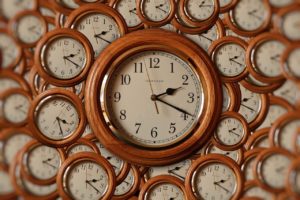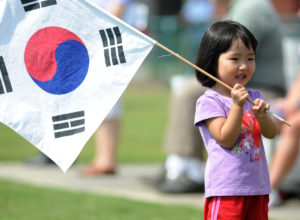Learn How to Tell Time in 9 Easy Steps
Telling time is a crucial part of everyday life. Whether you’re meeting a friend for coffee or have a plane to catch, you need to be aware of the clock. And if you want to reach Korean fluency, learning how to tell the time in Korean is a crucial lesson. Luckily, it doesn’t take long to master it. Here’s everything you need to know about telling time in Korean.
1. Review the Korean Number System
The first step of telling time in Korean is learning the Korean number system. However, you may know that there are two number systems in Korean: Native Korean and Sino-Korean. When you’re telling time in Korean, you need to use the combination of the two. For the hours, use Native Korean numbers. And for the minutes and seconds, you need to use Sino-Korean numbers.
For example, if you want to give the precise time of 2:30:10, you will use the Korean number for “2” and the Sino-Korean numbers for “30” and “10”.
While this might seem complex to you at first, as you practice, you will soon find it becomes automatic.

2. Master the Korean Words for Hours
Remember, you need to use Native Korean numbers to define hours in Korean. There are two ways to say “hour” in Korean: 시(si) and 시간 (sigan).
- You use 시(si) for a specific time as in “8 o’clock” or 여덟시(yeodeolsi)
- 시간 (sigan) for a length of time as in this is “7 hours long” or 일곱시간 (ilgobsigan)
And when you’re writing Korean time with these two words, there’s no space between the number and the word.
- For example, “3:00” will be 삼시 (sam si) and “3 hours long” will be 삼시간 (samsigan).
3. Learn How to Say “Minute” in Korean
For telling the minutes, you need to use Sino-Korean numbers. The word to specify minutes in Korean is 분 (bun). You can use it for both telling an exact time as well as for duration. And just like with the hours, there’s no space between the number and the word. For example, 15 minutes is 십오분 (sibobun).
4. Practice Telling Time in Korean
Now that you’ve seen how the hours and minutes are individually described, you can put them together. How would you say 8:15? 여덟시십오분 (yeodeolsi sibobun)
If you want to say “half past” in Korean, there’s a simple way to do that. 반 (ban) means “half” in Korean, but you can use it as “half past” when telling the time.
Instead of saying 열하나시십분 (yeolhana samsipbun) for 11:30, for example, you can say 네시반 (nesi ban “half past four”). Both versions are correct.
Save this infographic as a quick reference:
5. Specify AM or PM in Korean
Just like in the West, Korea has two different clocks: the 12-hour and the 24-hour clock. When you’re telling the time with the 12-hour clock, you need to specify AM or PM. Here’s how:
- AM. 오전 (ojeon) or “morning”
- PM. 오후 (ohu) or “evening”
Most people in Korea use the 12-hour clock for scheduling their day-to-day activities. Everything else falls under the 24-hour clock: meetings, business, etc.
When you’re specifying AM or PM in Korean, you put the appropriate words before the time. For example, 6:20 AM would be 오전여섯시이십분 (ojeon yeoseotsi ishipbun). And 4:15 PM is 오후넷시십오분 (ohu netsi shipobun). While this is the correct usage, people do occasionally reverse the order and put “ohu” or “ojeon” at the end.
6. Know When to Use the 24-hour Clock
The 24-hour clock not normally used in daily Korean conversations. However, it is used for bus and TV schedules as well as in airplane terminals, so you’ll want to get a handle on it.
While the words for hours, minutes, etc., remain the same as with the 12-hour clock, there is one peculiarity you’ll have to get accustomed to. The 24-hour clock only uses the Chinese (Sino-Korean) number system (even for the hours).
That means that 13:40 will be 십삼시사십분 (sipshamsi sashipbun). However, outside of the military, most Koreans don’t say this. Instead, they’ll say the time in the normal way, “hansi sashipbun” or 1:40.
7. Use Formal and Informal Korean Time Properly
When it comes to interacting with Koreans, both formal and informal terms are necessary to be polite. In this regard, telling time in Korean is no different. As with any interaction in a professional setting or with those who are older or not as close, it’s best to use the formal language.
Formal Korean Time
- The meeting starts at 14:30 pm. 회의는 오후 십사시 삼십분에 시작됩니다. (hoeuineun ohu shipsasi samshipbun-e sijagdoebnida.)
- The train will arrive at 15:50 on platform 9. 기차는 플랫폼 구에서 십오 시오십분도착합니 (gichaneun peullaespom gueseo shiposi oshipbun-e dochaghabnida.)
Informal Korean Time
With friends and family you should use the more intimate informal style:
- When does the concert start? 콘서트는 언제 시작 되나요? (konseoteuneun eonje sijag doenayo?)

8. Ask For the Time in Korean
Now that you know how to tell the time in Korean, you need to get comfortable with using your knowledge. These casual phrases are universal in politeness. Meaning that you can use them, regardless of whoever you’re asking for the time.
- What time is it? 지금 몇 시지? (jigeum myeoch siji?)
- It’s 10 AM now. 지금 오전 열시 (jigeum ojeon yeolsi)
- What time should we meet? 우리 몇시에 만날까요? (uri myeot sie mannalkkayo?)
- Let’s meet at 5:45 PM. 오후다섯시 사십오분 만나자 만나요.(ohu daseotsi sashipobun mannayo.)
9. Don’t Be Afraid to Speak in Korean!
Telling the time in Korean requires a certain level of Korean knowledge before you can get started. You need to be comfortable with numbers, conjugations, and sentence structures. But knowing how to tell the time in Korean will help you feel more confident on your path to fluency (especially if anyone ever asks you for the time!). And if you want to learn Korean faster as quickly as possible, you need to give OptiLingo a try!
OptiLingo was built on the best language learning methods. You can learn exactly how the locals speak with this convenient app. And with just 20 minutes/day, you too can master Korean. Speak fluently and comfortably with OptiLingo.
Discover how effective this method is when you try OptiLingo FREE today!








